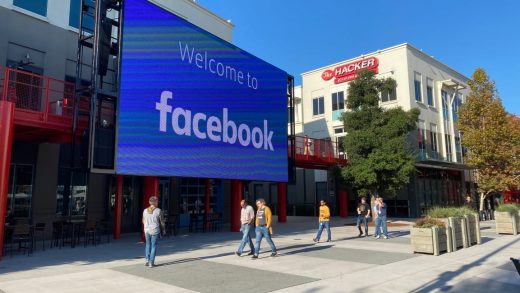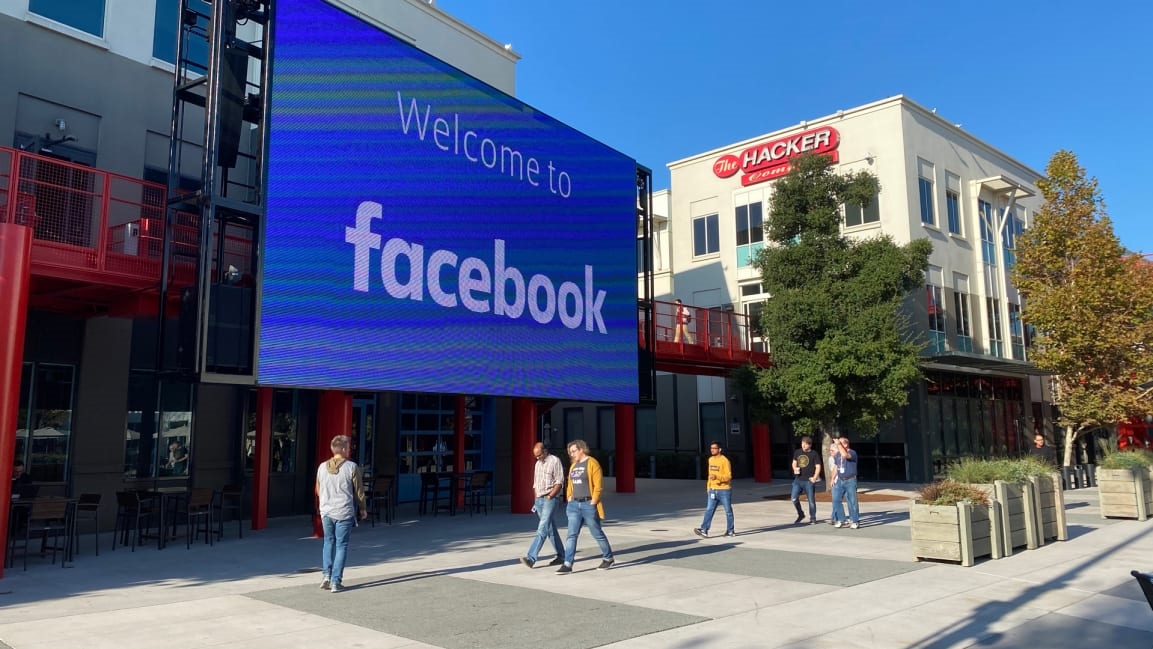How 15+ tech companies are transitioning back to the office (or not)
After big tech companies like Facebook and Google spent billions on cool office spaces and perks designed to keep workers at the office, those workers were suddenly able to do their jobs closer to home life and family during the pandemic. Office work was no longer the default, and many employees liked that.
Now, with the country reopening, tech companies are increasingly announcing their back-to-office plans. To understand the current job landscape facing tech workers, we examined the new office polices for more than 15 tech companies—from hybrid approaches that still favor in-person work to extreme flexibility to keep workers happy.
These policies are largely informed by the tech job market right now. Many tech workers—especially those with proven accomplishments and marketable skills—are looking around at other job opportunities, according to recruiters. A decision to change jobs might be swayed by the offer of more flexibility around remote work, which has put some tech companies in a bind. For them, it’s all about attracting and retaining top talent, and losing it is extremely costly. Tech company work policies should be read as highly strategic bids to keep talent happy in the pandemic’s wake.
Even though much of the country has reopened, the delta variant’s spread has confused and delayed those strategies even more. Companies don’t want to push fearful workers, nor do they want their employees getting sick. Even fully vaccinated workers risk contracting the delta variant, and those workers can be carriers who might infect unvaccinated coworkers at the office. Since most tech companies are relying on the honor system when it comes to workers’ vaccination status, a delta outbreak is a possibility. (At some companies it’s considered intrusive and antisocial to even ask the question, one recruiter told me.)
Most of the back-to-office policies we reviewed are some form of hybrid model—a mix of remote and on-site work. The mix often depends on the size and focus of the tech company. Larger companies—especially ones that make hardware—seem more interested in getting their people back to the office, at least most of the time. Apple, for example, argues that face-to-face collaboration among engineers and designers is crucial to developing winning devices. Still, those companies have faced resistance from their employees. Smaller software companies seem more inclined to embrace liberal work-from-home policies, perhaps with an aim toward luring talent from larger companies.
Here’s how tech companies are transitioning back to the office in 2021.
The ‘3–2’ plan
Apple
Apple CEO Tim Cook sent out a memo in June saying employees should plan to work in an office at least three days a week starting in September. After some push back from employees, Apple stuck to its guns on the policy, but has pushed the implementation date back to October. Apple will also let employees request to work remotely for several weeks during the year.
Amazon
Amazon said back in March that it expected to move its employees back to a “work-centric culture.” Some Amazon employees pushed back on the implication that all employees would need to return to the office full-time. As a result, Amazon revised its policy to something more in line with other big tech companies, saying employees could come back to the office three days a week, with the possibility of working certain weeks of the year completely remote.
UPDATE July 28: Google became the first major tech company to require its employees to get vaccinated before returning to the workplace. Citing growing levels of infections in much of the country due to the delta variant, Google CEO Sundar Pichai said in a note to employees that the company is extending its voluntary work-from-home plan until October 18.
Google eventually wants its employees to return to the office at least three days a week, and will allow them to work entirely remotely for up to four weeks out of the year. In a blog post, CEO Sundar Pichai says the company will let more employees request to work remotely full-time. But if they move to another city, they’re subject to having their salary adjusted to match local standards. Post-pandemic, Google believes that about 60% of its employees will be in an office three days a week, with another 20% working in new office locations, and 20% working from home.
Some Google employees were angered at learning that the company may use a different set of rules for higher-ranking people: A high-ranking Googler named Urs Hölzle recently told employees in an email that he’d be doing his job from New Zealand, CNET’s Richard Nieva reports. Google said Hölzle’s move was requested and approved before the hybrid work policy was announced.
Uber
The ride-hailing and food delivery company says it will shift to a hybrid remote office arrangement this September. The San Francisco-based company will allow employees to work from home two days a week but will expect them to be in the office for face-to-face work the other three. “We feel that this combination of in-person and remote work will give people the freedom to do their best work while staying connected to their colleagues,” a spokesperson said.
Equal split
Microsoft
Microsoft says it plans to fully open its offices in the U.S. by September 7, 2021 at the earliest. “We continue to review the situation on a local basis in each region/country/state where we work and will adjust dates by country as needed,” a Microsoft spokesperson said in an email. The company, including its Redmond, Washington, headquarters, is currently in a “soft open” phase of its back-to-office plan. When health conditions permit offices to officially open, Microsoft expects that most of its workers will spend no more than half their time working from home.
DoorDash
The delivery app company says its corporate offices will remain “officially” closed until January 2022. But the company has begun to open its 17 U.S. corporate offices “so that employees can begin to go into the office in-person as they’d like,” a spokesperson said. DoorDash says it’ll phase in a hybrid work model next year, wherein most of its employees will split their time between in-office work and remote work.
Adobe
Adobe says its employees will have the option to spend half their time working from home and half their time working in an office. “We’ll gather for the moments that matter: We will have an intentional mix of physical and virtual presences, with in-person gatherings driven by purpose and designed for collaboration,” chief people officer Gloria Chen wrote in a June 24 blog post. Adobe says it expects to double the size of its remote workforce over time.
Mostly WFH
Salesforce
Salesforce employees have the option to continue working from home through at least December 31, 2021. After that, most employees will work in an office between one and three days a week, the company says, with a subset of employees working remotely full-time if their work allows for it. “An immersive workspace is no longer limited to a desk in our Towers,” chief people officer Brent Hyder wrote in a blog post. “The nine-to-five workday is dead; and the employee experience is about more than ping-pong tables and snacks.”
Dropbox
The company says it’s putting its “virtual first” work policy in place, with remote work being the default way of working going forward. In July Dropbox employees began to return to offices in San Francisco and Washington, D.C., with other locations to follow through the rest of this year. The company has also been redesigning some of its offices (in Seattle, San Francisco, and Austin for example) to have more open collaboration spaces with plentiful meeting rooms.
Grammarly
The writing tools company says it’s adopted a “remote-first hybrid” model, meaning that its employees can work primarily from home, and its office spaces will now turn into “hubs” where teams can work or hold face-to-face meetings. “By ‘remote-first,’ we mean that our modes of collaboration will assume every team member is remote,” writes Grammarly CEO, Brad Hoover in a June blog post.
All remote
Twitter just reopened its San Francisco headquarters, but the company is not requiring employees to return to the office if they can do their job remotely. Many employees will split their time between home and office. “If our employees are in a role and situation that enables them to work from home indefinitely or split their time between their home and the office, we will support that,” the company said in a statement.
Slack
Slack is transitioning to a remote-first workforce for most employees. The company says it’ll still have face-to-face get togethers, but mainly for pre-scheduled events like project kickoffs and team building. It’s a fitting strategy for a company whose product is designed to enable remote communication and collaboration.
The social networking company said in May 2020 that it would allow its most senior and experienced employees to request to work from home full-time. But in early June the company said it’ll let all full-time employees work from home permanently, if their job allows for it. “We’ve learned over the past year that good work can get done anywhere, and I’m even more optimistic that remote work at scale is possible,” CEO Mark Zuckerberg wrote in a email to employees. Facebook has also said that it may adjust the salaries of employees who relocate, to match local salary standards. The company, which employs about 60,000 people, says it plans to open its offices up at 50% capacity in September, moving to full capacity in October.
Work anywhere
GoPro
GoPro is taking an even more progressive approach to post-pandemic work than Twitter and Slack. “GoPro fully supports its employees who want to relocate for whatever reason, be it to pursue their passions, be closer to family or otherwise,” GoPro CEO Nicholas Woodman wrote in a blog post. “We proactively encourage our employees to relocate if that will make them feel happy and appreciated.”
Reddit has said it will give all of its employees a chance to work remotely full-time. It’s also said it will continue to pay employees who relocate away from coastal centers their current salaries, regardless of local salary norms. This strategy makes sense for a relatively small tech company that offers a digital-only service, and it may help attract talent from larger tech companies.
Coinbase
Coinbase says it’s adopting a “remote first” approach to work. Almost all of its employees can continue working fully remote if they choose, CEO Brian Armstrong said in a blog post. Anyone who wants to return to an office can do that.
Not sure yet
Airbnb
Airbnb says it doesn’t plan to require its employees to return to the office until September 1, 2022. CEO Brian Chesky said during an earnings call in May that his company wants to develop an “anywhere lifestyle” for employees. Even when employees return next September, they won’t be expected to spend all week in an office. The company is still working out the details of its balance between face-to-face work and remote work. “We want to get it right,” Chesky said. “We don’t want to rush into this, so that’s what we’re going to be working on over the course of the next year.”
IBM
IBM says it’ll reopen all of its U.S. sites the week of September 7. As for remote work, the company is still working out its plans. “IBM has long-established practices and policies supporting work–life balance which will continue as we return to the office,” the company says in a blog post. “More communication from your unit leadership, as well as specifics on safety protocols, will follow later this summer. Looking forward to seeing you in September.”
(37)



